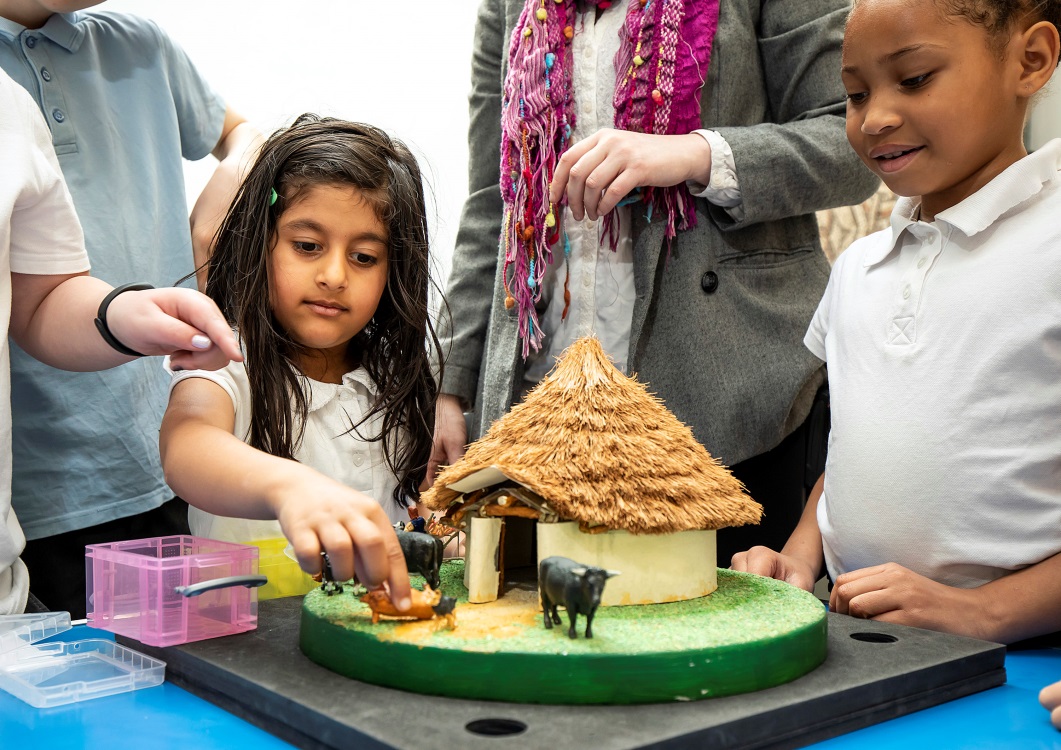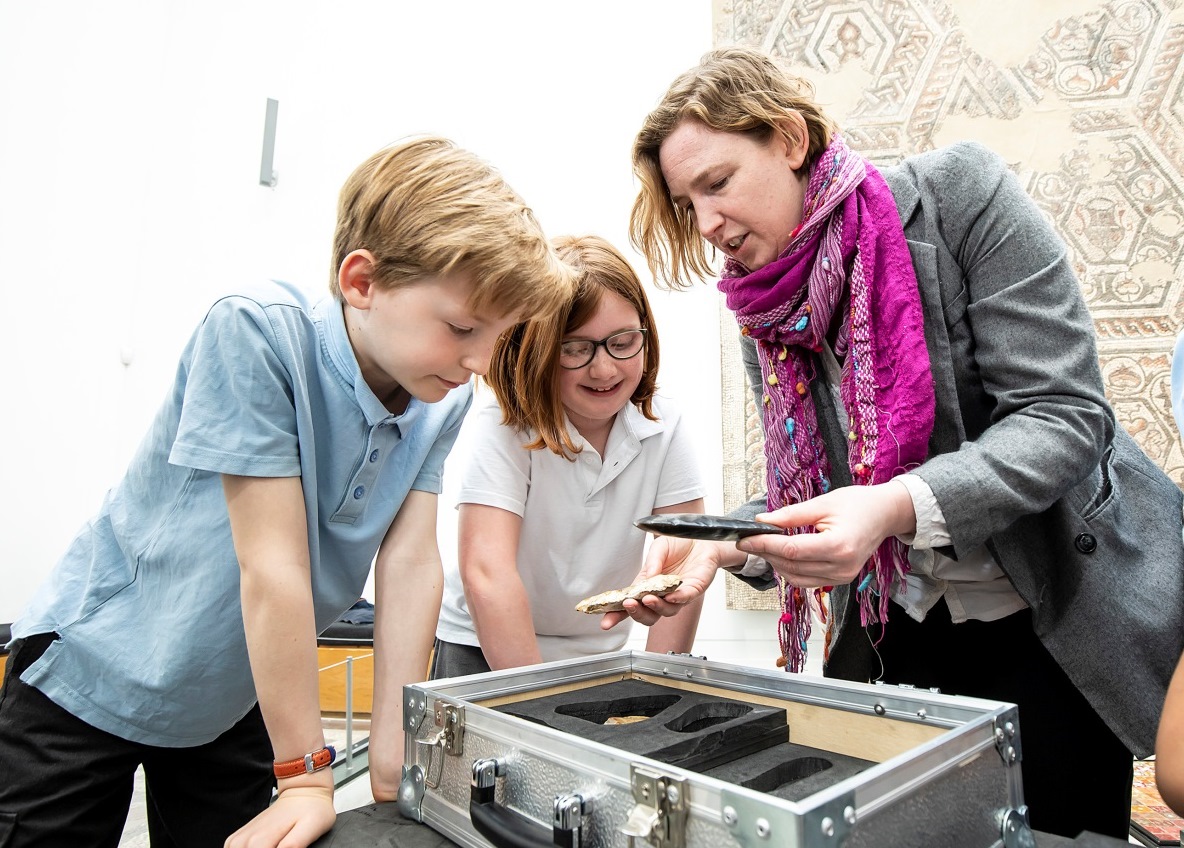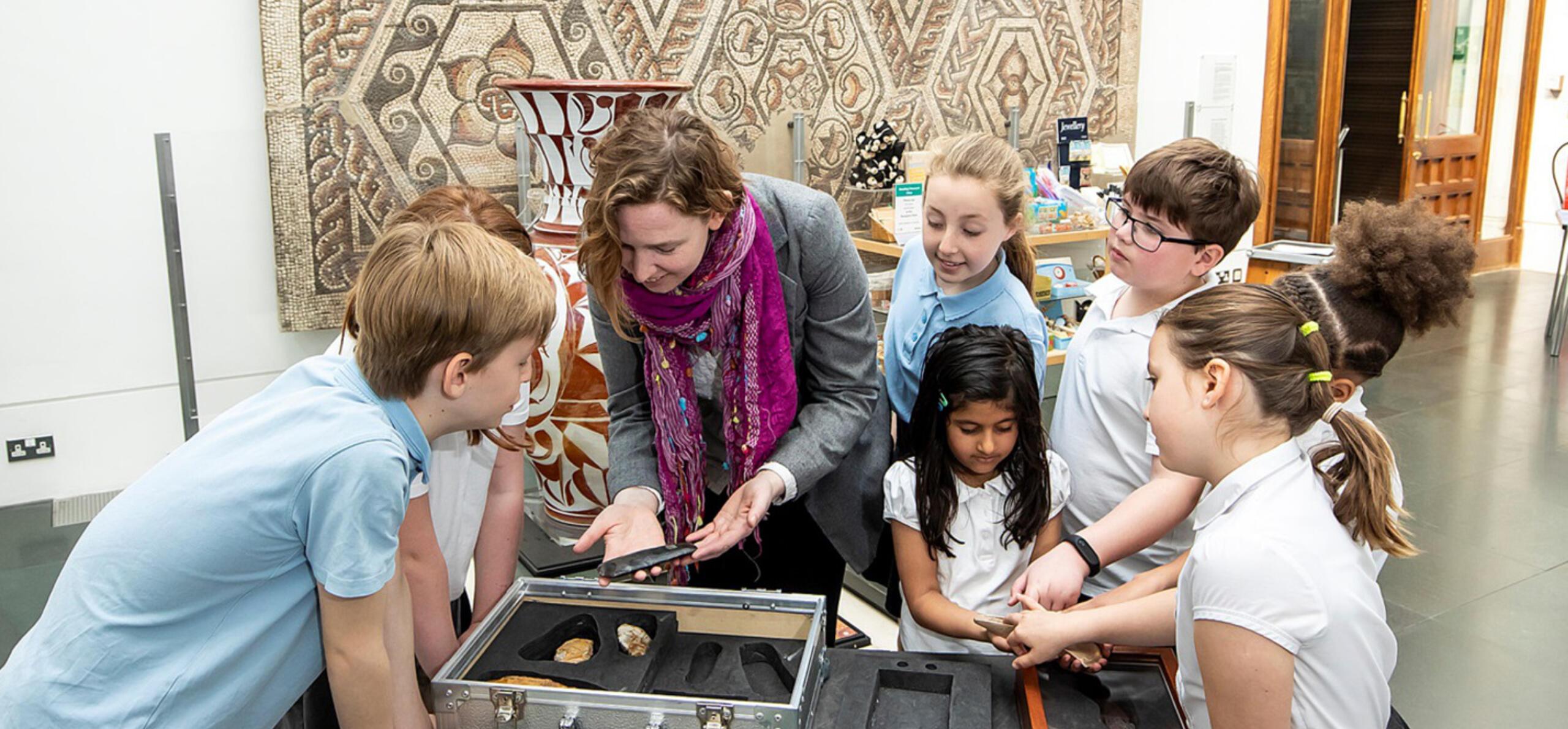Sandra Gough, one of our most inspiring and versatile session leaders, tells us about her experience in teaching Prehistory here at Reading Museum.
What a privilege to work at Reading museum! I get to dress up as a Victorian teacher and a Victorian servant, using various artifacts to recreate that era. The Bayeux tapestry is a wonderful, tangible piece of evidence, as are our Roman artifacts. The Abbey itself can be experienced; taking us back in time and giving us a scale of how this building would have dominated Reading. How then can one deliver Pre-history and bring to life an age to which we, as adults, cannot easily connect? How much more difficult it must be for children to understand.
Condensing millions of years of history into a comprehensible progression has been a challenge. What, if anything, to leave out and what must be left in? We have a time line to try to show scale, but we have found the easiest way to get children to visualise this scale is to ask them to imagine a spilt bag of sugar. Each grain of sugar represents a year, the sugar is on the floor and as we move along the time line the sugar is used up, until we have but a spoonful left to represent the Iron Age.

Round House Model
In the session we use large pictures to help illustrate the time line, showing the link between climate change and the move from cave-dwelling hunter gatherers to settled farmers. We look at how, as the people learnt to control fire, the cooked food aided brain development. Communication with language led to organised communities, who were able able to build Stonehenge, bury their dead, weave clothes and have the luxury of sufficient time to make jewellery. They had time also to decorate pots and, of course, make their tools more and more effective.
We ask two children to dress up as Stone Age people, wearing skins, living in caves and having no spoken communication. We all try to decide how they would communicate and what they would need to communicate. This is always an interesting exercise, as the children all seem to understand that communicating "danger" and "hunger" would be near top of the list. It is generally agreed that sign language for a mammoth would be to place your hands starting at your face, then moving away and curving upwards! We then think of the first spoken words; again the children seem to be able to pick up on some key words: hunt, danger, water, fire, food and, perhaps, Mum and Dad.

Coins activity
Progressing with the session, we move along the timeline, with different children dressed in woven clothes and having jewellery. We decide what kind of housing they would have and what they would eat.
At this point the children do some small group activities, where they explore and handle artifacts in detail. We have a “hands on” time line of Pre-historical axe-heads. The Stone Age tools show a clear progression of how mankind worked flint into an increasingly effective axe-head. The Bronze Age replica shows the move to casting metals and the real, but decayed, Iron Age axe-head shows the culmination of millions of years of progress.
They make a model of a round house, make a coin to take away and look at Hunter Gatherer and Settled landscapes with the associated flora and fauna. They match prehistoric items with the modern equivalent and look at the effect of climate change on the size of the animals etc.
Halfway through these activities we reconvene, at which point the children are invited to peg key pictures to the time line: fire, language, pots, cave painting, fishing and so on.

Handling Activity
As a conclusion to the session the children are asked to decide which end of the time line they would choose. This seems to be a real gender divide. More boys select to be Hunter Gatherers (apparently it would have been more exciting) more girls choose to be settled (is this because they perceive it to be less dangerous?). However during one Vox Pop, some girls moved over, when I pointed out that there need to be female Hunter Gatherers to have babies.
So there we have it, millions of years of human development- told in 105 minutes with an imaginary bag of sugar, the sign language for mammoth and some fabulous, available to handle Stone Age tools.





